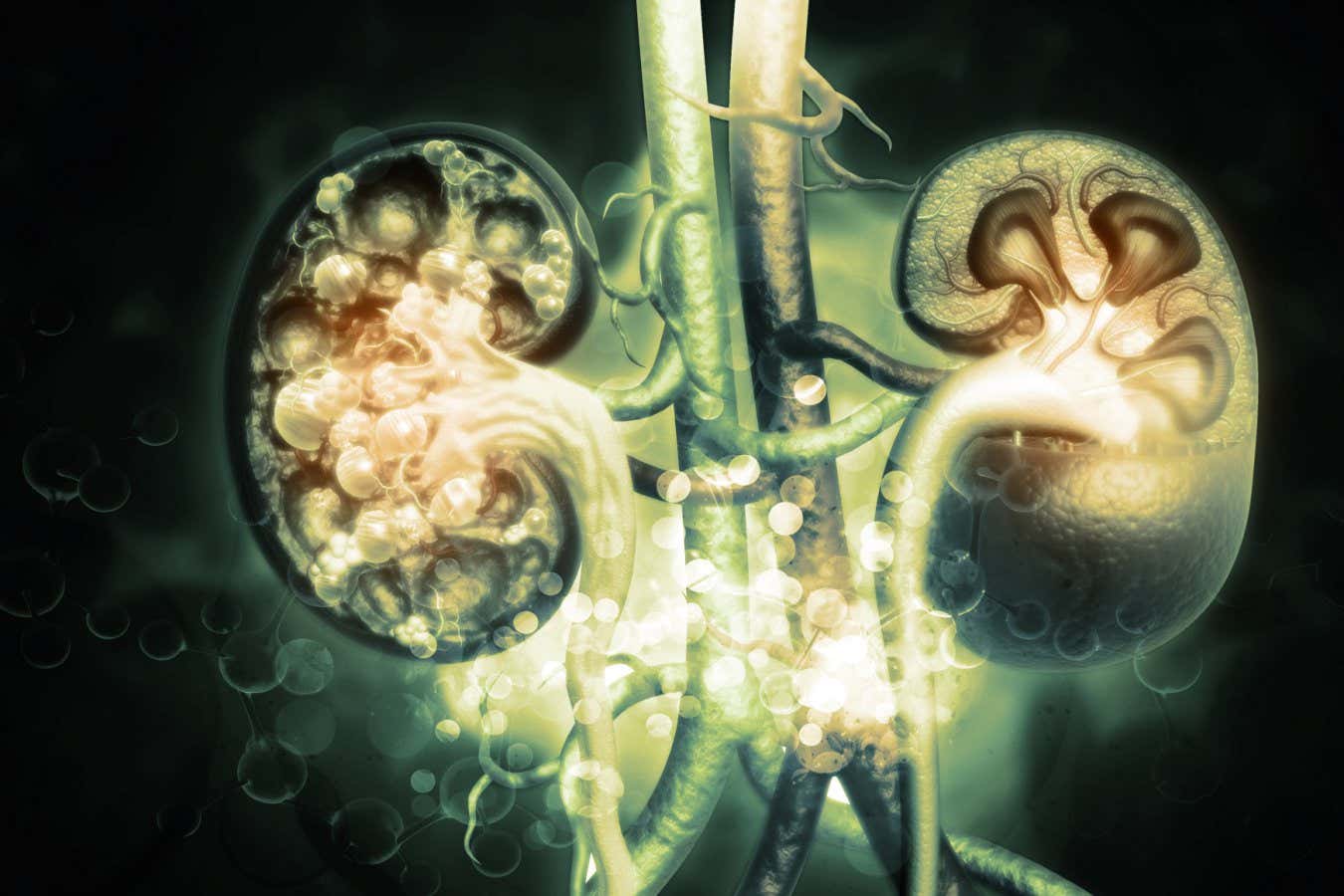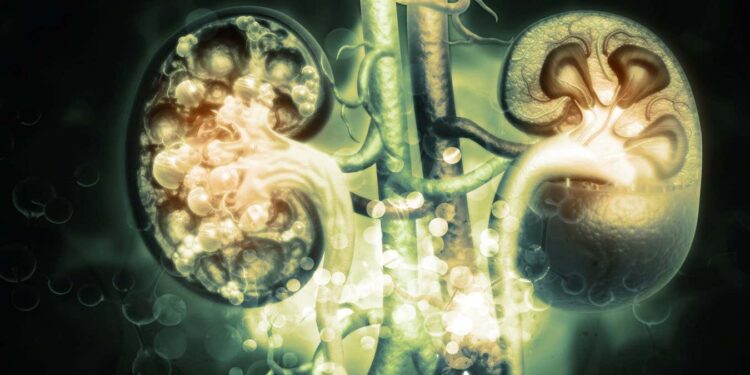
Kidney disease can lead to high blood pressure and infections
Mohammed Haneefa Nizamudeen/Getty Images
The damage to the body caused by the most common type of inherited kidney disease was thought to be irreversible. But now, animal studies suggest that correcting the responsible mutations via CRISPR gene editing can reverse at least some of it.
Polycystic kidney disease (PKD) causes extensive changes to the kidneys over time. “It really seemed unlikely that you could change that even if you correct [the mutation],” says Michael Kaminski at the Charité – Berlin University of Medicine in Germany. “But now it seems that the disease might be more plastic than somehow previously appreciated.”
PKD leads to fluid-filled cysts that grow larger over time, forming in the kidneys and often also in the liver. These organs eventually fail, meaning people need dialysis or a transplant to stay alive. But even before the kidneys fail, their damaged and swollen state can cause many other issues, from high blood pressure and infections to excessive pressure on other organs.
With the adult form of the disease, which is estimated to affect 12 million people worldwide, cysts may not grow large enough to cause symptoms until people are in their 30s, during which time there could have been extensive changes to the kidneys and liver.
Now, Kaminski’s team has used a form of CRISPR called base editing to correct a mutation in a gene called Pkd1 that causes the disease in mice.
The methods his team used meant the mutant gene was mainly corrected in the liver, and the number and size of cysts there declined after the treatment. There were also signs of improvement in the kidneys, says Kaminski.
Separately, Xiaogang Li’s team at the Mayo Clinic in Rochester, Minnesota, did a similar study using methods that better target the kidneys. This suggests that the number and size of cysts there can also be reduced, says Li.
Both sets of researchers used viruses to deliver the gene-editing machinery. This could be an issue if repeat doses are needed, as the immune response to viruses can stop treatments from working. “That’s a concern,” says Li. “But so far, based on the animal model, the immune response is very limited.”
Replacing the viruses with lipid nanoparticles like those used in mRNA vaccines would avoid the potential immune issue, but these particles can’t penetrate deep enough into the kidneys via blood to be effective, says Kaminski. “But I think an approach where you would deliver [lipid nanoparticles] through the urethra could be more realistic,” he says.
Another issue is that base editing can correct only single-letter mutations and so wouldn’t work for people whose disease is caused by longer mutations. But Li says he has achieved similar results with a technique called prime editing, which can correct longer mutations.
This work will be published in a scientific journal soon, he says, after which he aims to move to tests in people. “When our paper is published, I will try to organise a small clinical trial,” he says.
More broadly, the finding by the teams that PKD may be reversible should inspire much more research into this approach. At present, the only approved treatment is a drug called tolvaptan, which only somewhat slows progression and requires people to drink large quantities of fluids.
Topics:
Source link : https://www.newscientist.com/article/2483470-gene-editing-could-treat-damage-from-irreversible-kidney-disease/?utm_campaign=RSS%7CNSNS&utm_source=NSNS&utm_medium=RSS&utm_content=home
Author :
Publish date : 2025-06-10 17:00:00
Copyright for syndicated content belongs to the linked Source.













